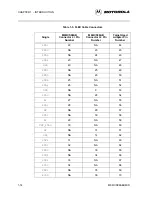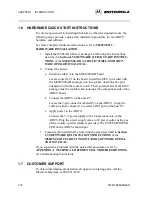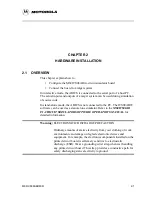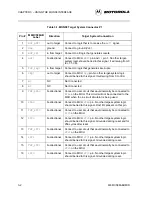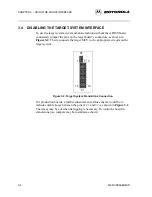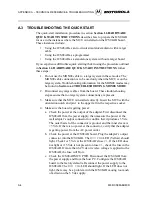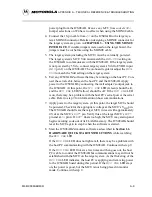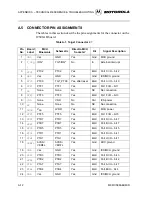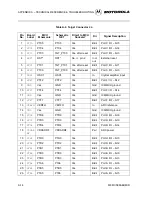
A-2
M68ICS08ABUM/D
APPENDIX A – TECHNICAL REFERENCE & TROUBLESHOOTING
A.2
FUNCTIONAL DESCRIPTION
The M68ICS08AB hardware consists of one component:
•
ICS08AB board
A.2.1
ICS08AB Board
The core component of the board is the MC68HC908AB32 MCU. This MCU
resides either on the ICS08AB board or on a target system.
When the MCU resides on the board, the board may be used as an in-circuit
emulator or simulator for the MC68HC908AB32. For this configuration, a
target cable is run from the board to the target system. A flexible target head
adapter cable (Motorola part number M68CBL05C), terminating in connectors
for target head adapter. For a 64-pin QFP-package MCU on the target system,
use Motorola THA model number M68TC08ABFU64.
When the MCU resides on a target system, the ICS08AB board can
communicate with the MCU over a 16-pin MON08 cable (Motorola part
number 01-RE91008W01). Either version of the MCU is supported when
using the MON08 cable.
When using the ICS08ABZ simulation software, the MCU provides the
required input/output information that lets the host computer simulate code,
performing all functions except for maintaining port values. The internal
FLASH/EEPROM memory on the device is downloaded with a program that
generates the appropriate port values. The ICS08ABZ software on the host
computer lets the host computer become a simulator. When the ICS requires
port data, the computer requests the data through the host's serial connection to
the core MCU. The core MCU responds by sending the data to the host via the
serial connection. It is the arrangement that allows a real-world interface for
the in-circuit simulator. The clock runs the MCU at a 4.9512-MHz external
clock rate. Note that the simulation speed will be slower than this rate, because
the host computer is the simulator.
When using the ICS08SZ debugging software, your code can be run directly
out of the MCU’s internal FLASH at real-time speeds.
Note: The ICS08AB’s emulation of the MC68HC908AB32 is limited. Port A bit 0
(
PTA0
) is used for host-to-MCU communication. The port bit is not available
for connection to a target system. Setting DDRA bit 0 to 1 will stop
communications with the simulation or debugger software and will require a
system reset to regain communication with the MCU. Port bits
PTC0
,
PTC1
,
and
PTC3
are temporarily disconnected from the target system during reset.
Emulation of the MC68HC908AB32’s
RST*
signal is also limited in that the
signal is not a bidirectional, open-drain signal. It is emulated as either an input
or an output (determined by jumper header
W3
) when using the target
Summary of Contents for M68ICS08AB
Page 6: ... 4 CPU32XIPB D ...
Page 8: ... 6 CPU32XIPB D ...
Page 60: ......
Page 61: ......
Page 62: ......
Page 63: ......
Page 64: ......
Page 65: ......
Page 66: ...A 32 M68ICS08ABUM D APPENDIX A TECHNICAL REFERENCE TROUBLESHOOTING ...

